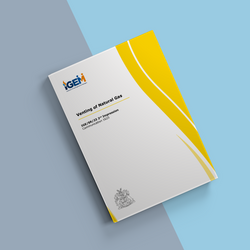IGE/SR/23 - Venting of natural gas

These recommendations cover the conceptual design, operation and safety aspects of venting of Natural Gas for the depressurisation of plant or equipment for onshore vertical vent systems.
They are not intended to cover the detailed design, manufacture, installation, maintenance and inspection of the hardware, or to cover flare systems, though they do provide guidance in the event of vented gas being ignited. They only cover releases of liquid free Natural Gas which have a combined proportion of methane plus inerts of greater than 89% by volume and temperature between -50°C and 50°C from vent stacks with internal diameters equal or greater than 25 mm of flow rates up to 40 kg s-1.
They do not apply to instrumentation vents and purging and venting operations where small volumes of gas are released.
The scope of the standard includes:
- Relevant Legislation
- Vent design, including stack exit velocity, flow control, gas dispersion, thermal radiation and ignition sources
- Design of permanent vent systems, including pipework and vent stack location
- Additional concerns for consideration with temporary vent systems
- Major planned venting operations.
Introduction
1.1 These Recommendations have been prepared to provide guidance primarily on the venting of natural gases.
1.2 The Recommendations have been prepared taking into consideration the guidance contained in the British Gas plc Engineering Standard BGC/PS/SGV2 on venting. They are based on up to date models and they include recognition of the fact that recent environmental legislation in the UK has placed constraints on venting operations. It is recommended therefore that using best available technology and knowledge not entailing excessive cost, safe systems are designed to minimise the venting of gases to the atmosphere.
1.3 It is now widely accepted that the majority of accidents in industry generally are in some measure attributable to human as well as technical factors, in the sense that actions by people initiated or contributed to the accidents, or people might have acted better to avert them.
It is therefore necessary to give proper consideration to the management of these human factors and the control of risk. To assist in this, it is recommended that due cognizance should be taken of the Health and Safety Executive publication HS(G)48 “Human factors in industrial safety”.
1.4 These Recommendations do not attempt to make use of any method or specification obligatory against the judgement of the responsible engineer. Where new and better techniques are developed and proved, they should be adopted without waiting for modification of these Recommendations. Amendments to these Recommendations will be issued when necessary and their publication will be announced in the Journal of the Institution.
1.5 Requests for interpretation of these Recommendations in relation to matters within their scope, but not precisely covered by the current text, should be addressed to the Secretary, The Institution of Gas Engineers, 21, Portland Place, London W1N 3AF and will be submitted to the relevant Committee for consideration and advice, but in the context that the final responsibility is that of the engineer concerned. If any advice is given by or on behalf of the Institution of Gas Engineers, this does not imply acceptance of any liability for the consequences and does not relieve the responsible engineer of any of his or her obligations.
Scope
2.1 Having considered the alternatives, if the decision is made to vent, these Recommendations cover the conceptual design, operation and safety aspects of permanent, temporary and emergency venting of natural gas for the depressurisation of plant or equipment for onshore vertical vent systems.
2.2 These Recommendations are not intended to cover the detailed design, manufacture, installation, maintenance and inspection of the hardware for example valves, pipework etc.
2.3 These Recommendations are not intended to cover flare systems, although they provide guidance, particularly with respect to thermal radiation, in the event of vented gas being ignited.
2.4 These Recommendations cover releases of liquid free natural gas which have a combined proportion of methane plus inerts of greater than 89% by volume, with gross calorific values below 41 MJ m-3, and at temperatures between -50◦C and 50◦C. The venting of gases other than the natural gases defined above are outside the scope of these Recommendations, and specialist advice should be sought on this topic.
2.5 These Recommendations cover releases from vent stacks with internal diameters equal to or greater than 25 mm. In order to promote rapid gas dispersion, it is recommended that the exit velocity of any release should be greater than 60 m s-1, equivalent to a mass flow rate of 0.02 kg s-1 from a 25 mm diameter vent stack. However, consideration is given to those situations where this minimum exit velocity cannot be achieved.
2.6 These Recommendations apply for flow rates up to 40 kg s-1. They do not apply to instrumentation vents, and purging and venting operations where small volumes of gas are released, e.g. small vents in distribution systems. Additionally, the isolation, purging and venting of watersealed and waterless gasholders should be carried out in accordance with the Recommendations IGE/SR/4.*
2.7 These Recommendations do not apply to purging operations within the scope of the Recommendations IGE/UP/1.**
